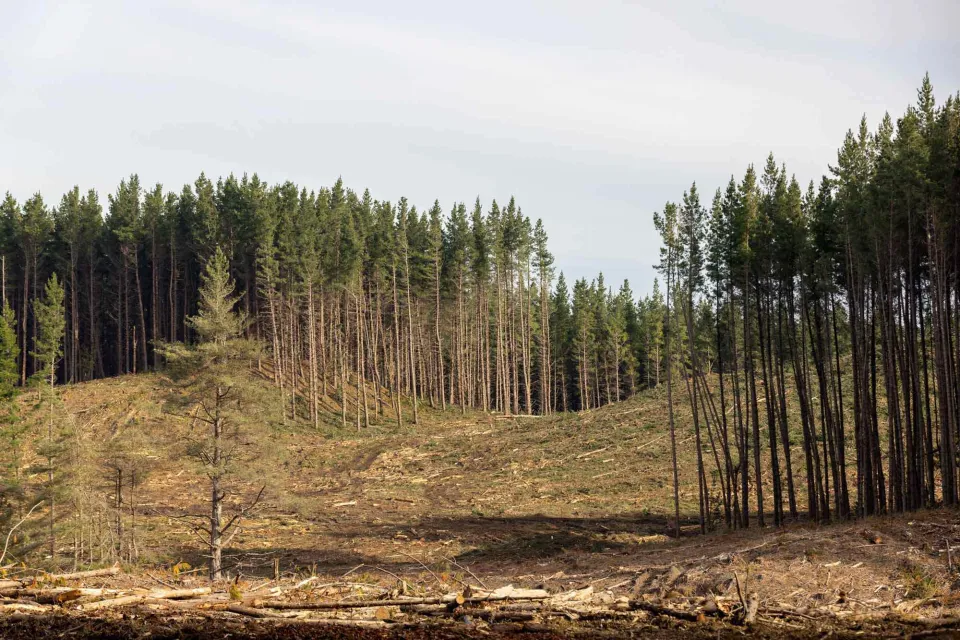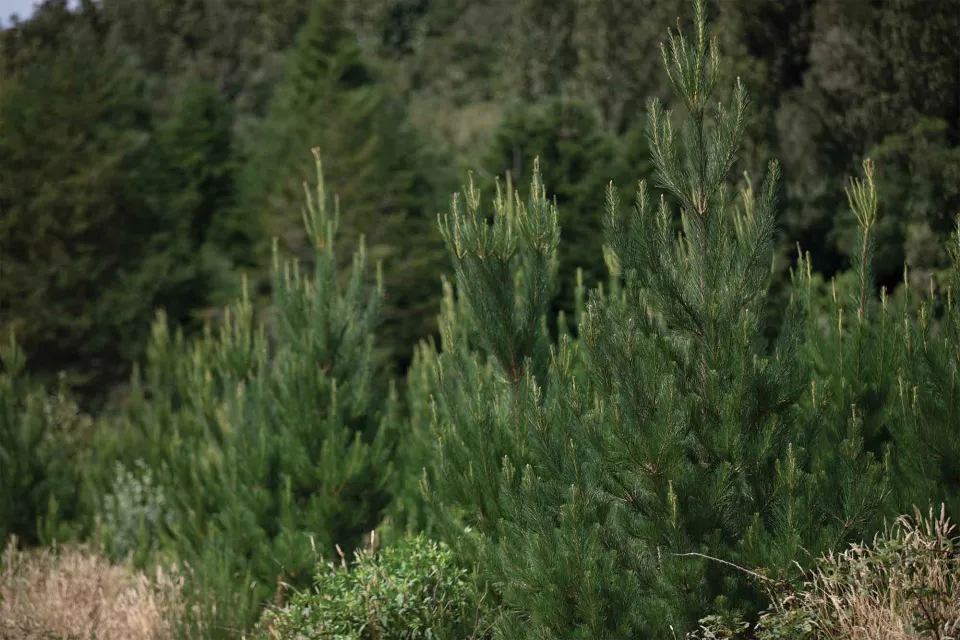-
About
-
Products
- By Timber Product
- Cladding
- Decking
- Joinery
- Screening
- Panelling
- View all
- By Application
- Exterior Cladding / Siding
- Exterior Rain Screen
- Exterior Roofing
- Interior Walls & Ceilings
- Soffits
- Screening, Fins & Battens
- Windows, Doors & Joinery
- Posts & Beams
- Accessories + Samples
- Coatings
- Fixings
- Samples
-
Shop
- Samples
- Timber Samples
- Architectural Sample Box
- View all
- Accessories
- Coatings
- Fixings
- View all
-
Resources
- By Resource Type
- Technical Data Sheets
- Guides & Manuals
- Technical Articles
- Profile Drawings
- View all
- How To
- How To Specify
- How To Install
- How To Maintain
- Projects
- Contact
Supporting Soil Health Through Well-Managed Pine Forests
Learn how New Zealand’s approach to forestry has changed over the past generation and how well-managed plantation forests can maintain or improve soil health.
“I’ve always believed planted forests were going to be important to New Zealand,” says Peter Clinton, Principal Researcher at Scion. “There’s a lot of commercial focus on how New Zealand feeds the world, with relatively little recognition of how our timber industry supports those same global communities.”
New Zealand’s diverse soil types are generally naturally acidic, with planted forest soils providing many important benefits including the growth of timber and fibre, carbon sequestration, providing habitats for a variety of biodiversity, filtering groundwater, and regulating flooding. The impacts of planted forests on New Zealand soil have been studied, with positive results, Peter says.
“We’ve studied the nutrient uptake and demand on these sites for over 30 years and have found that, depending on how those trees are harvested, we can control the quantity of nutrients removed,” Peter says.
“We’ve also done experiments on how harvesting intensity can impact long-term productivity, and we’ve already seen many of these plantation sites go through a second rotation without any loss of productivity. In the case of Kaingaroa Forest, we’re heading into a fourth rotation, with planted trees growing there now for about 100 years.”
Throughout their full lifecycle, plantation forests and natural forests can withstand a similar level of soil disturbance, Peter says. “Natural forests undergo quite catastrophic disturbances at times, through weather events that might see trees topple and root plates come out of the ground. But they recover. The same is true of the soil disruption caused by harvesting in planted forests. Soil is quite robust - if you don’t burn it, you won’t typically see a big shift in nutrients.
“In some cases harvesting can be beneficial, as it brings unweathered material and subsoil to the surface. That process happens naturally and as part of forest management. The other thing that happens is nutrient cycling, where you will see nutrients entering a forest with rain or dust. There are lots of natural processes going on that help maintain the fertility of a forest site.”
New Zealand’s approach to planted forests shifted significantly about 40 years ago with the adoption of the New Zealand Forest Accord, Peter says. “The Accord brought the government and the industry together to protect our remaining natural forest from exploitation. That was important because, until then, the Forest Service had been harvesting native forest and replanting it with pine. This is not a practice seen anymore.
New Zealand is unique in that we now actively prevent indigenous forests from clearing.” The Accord was prompted by conservationists in the late 1970s who occupied Pureora Forest to protest the felling of native trees. Native logging is now strongly regulated through plans and permits on private land and 80 per cent of New Zealand’s indigenous forests are publicly owned.
Around the same time, New Zealand farmers started looking to diversify and, in the 1990s, many started planting managed forests on low-productivity farmland.
“In a lot of these sites, the cleared farmland had built up big stocks of phosphorous and become quite fertile. Our research shows former farm sites are about 20 per cent more productive than traditional forest sites, with the forest industry benefitting from that previous land use.”
Another critical shift that emerged after the New Zealand Forest Accord was the adoption of Forest Stewardship Council®-certified rapidly renewable plantation forests such as those used by Abodo. “These planted sites are carefully managed, with a focus on maintaining long-term productivity. The companies registered as part of this scheme, such as Abodo’s timber sources, also need to have part of their forest estate as reserves – about 10 per cent on average.
Many FSC®-registered companies act as stewards for wetlands or bushlands, managing the land to protect biodiversity and water quality. They should be wearing this as a badge of honour, but often don’t because of the misconceptions around pine forests in New Zealand.”
Many of these common myths are persistent, Peter says, even though the research doesn’t support them. “People often believe radiata pine is short-lived or unsustainable. In fact, planted pine forests can provide many long-term ecosystem services such as timber, recreation, carbon sequestration, biodiversity, water regulation, and soil stabilisation. Well-managed planted forests can maintain or even improve soil health while supporting a diverse range of organisms, plants and birds, including endangered species.
“There’s also a negative perception that pines acidify soil, even though our native forests in New Zealand are naturally acidic. It all comes back to your point of reference and an understanding of the wider context around soil health,” Peter says.
“The Ministry for the Environment’s soil quality indicators have caused debate over the past 25 years because pine forests are typically planted on some of the poorest-quality soil and compared with pastoral soils, rather than native forests on virgin soil, with which they have many similarities. We need better cause and effect separation to effectively compare.”
Timber is a necessary material for many industries worldwide, and planted forests give us the opportunity to responsibly produce it, Peter says. “Timber has always been used for an extensive range of products, with growing populations only increasing global demand.
“We also need locally grown timber for essential housing. There’s a huge opportunity to create high-value timber products and, in doing so, create more jobs for New Zealanders. Planted forests are an excellent way to meet those growing needs while protecting our primary forests.”



